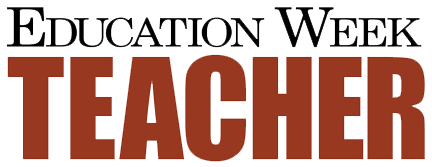 Education Week Teacher has a feature ”Classroom Q & A with Larry Ferlazzo,” which has a different education topic every week, to which guest writers post responses. Last week it was: ”’Learning Self-Regulation’ Is Needed on Path to Academic Success.” I was one of the contributors, and this was my response:
Education Week Teacher has a feature ”Classroom Q & A with Larry Ferlazzo,” which has a different education topic every week, to which guest writers post responses. Last week it was: ”’Learning Self-Regulation’ Is Needed on Path to Academic Success.” I was one of the contributors, and this was my response:
The issue of self-control is a particularly important one for adolescents because the areas of the brain that are associated with self-control are located in the prefrontal cortex (behind the forehead) and don’t fully develop until the early to mid-twenties. During the teen years, the prefrontal cortex goes through a lot of reorganization. Especially key in this transformation is the ”pruning’ of excess neural connections and the ”myelination” or insulation of nerve channels, both of which serve to carry neuronal impulses more quickly and efficiently to all centers of the brain including the limbic system where impulsiveness often runs rampant. The pruning of dendrites in the prefrontal cortex (the branches of neurons that connect with other neurons) is highly subject to environmental influences, a feature of the brain called ”neuroplasticity.”
This means that educators have a huge responsibility in providing experiences that effectively ”wire” those self-control connections in the brain. Above all, educators need to refrain from using punishment, criticism, zero tolerance policies, or other authoritarian methods of ”getting kids to control themselves.” None of these interventions allows the self-control areas of the brain to properly develop. Instead, secondary educators need to give students increasing responsibilities and should provide them with opportunities make choices at all levels of the curriculum. This effort will help lay the educational, psychological, and neurological foundations for self-control. Specific interventions that can assist in this regard include some of the following strategies:
- let students choose their own reading materials
- use self-assessment frequently in the classroom
- allow for greater student voice in how the classroom and the school is run
- permit students to create projects in areas of interest and passion
- offer more electives at the secondary school level
- use student polling frequently
- listen to students’ ideas and opinions with respect
- give students the opportunity to learn material at their own rate
- provide opportunities for independent study
In these and other ways, educators can empower students to take charge of their own learning, and optimally develop those prefrontal functions so important in developing self-control.
For more information about this and other topics related to the adolescent brain and secondary school education, see my book The Power of the Adolescent Brain: Strategies for Teaching Middle and High School Students.
This post was brought to you by Thomas Armstrong, Ph.D. and www.institute4learning.com.
Follow me on Twitter: @Dr_Armstrong



















